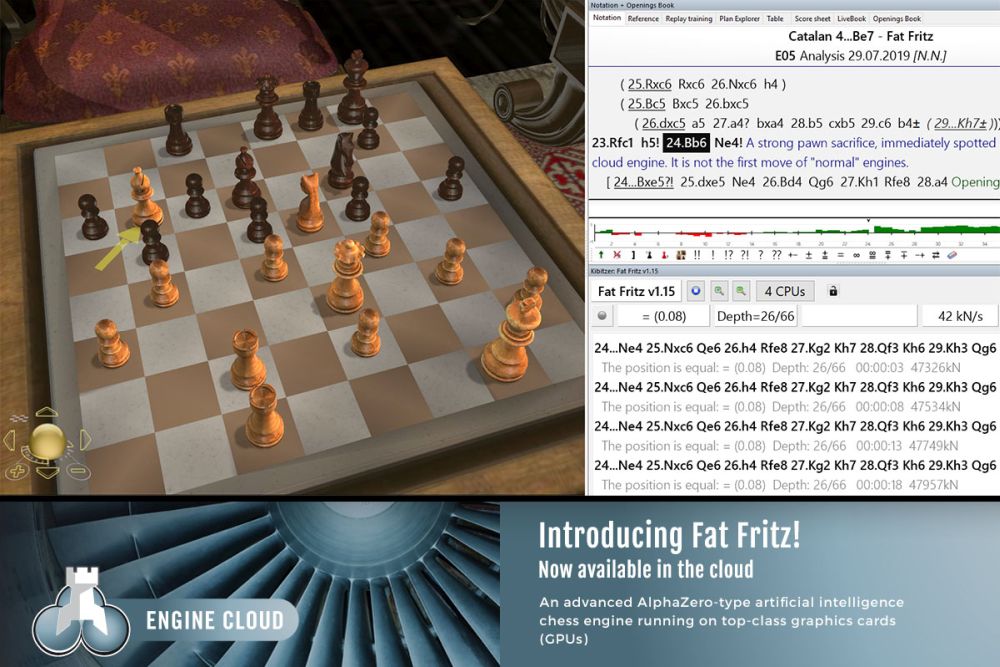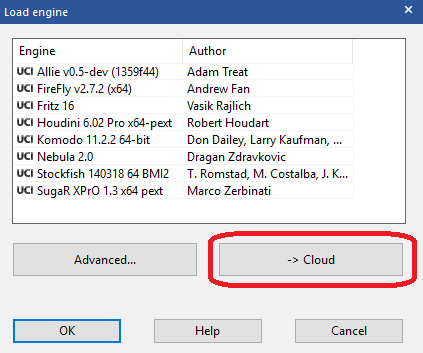Analysing your openings repertoire with Fat Fritz
While the idea of Fat Fritz as a self-taught chess AI is tantalizing, many players may wonder why this impacts them if they already have a good engine and they are not grandmasters seeking nearly ineffable edges in their preparation. In the following article, we let a strong amateur study with it for some hours and compare notes with analysis he had made from other engines. With the meteoric rise of usage of AI in chess, Fat Fritz is something undeniably useful for any professional chess player. Learning how to maximize its usage and reap benefits from it is definitely worth learning now than procrastinating it.
Not starting from zero

One of the biggest strengths of Fat Fritz over traditional engines is not a simple Elo equation, but in how it evolved. For example, much like when we learn ourselves, the first thing a traditional engine learns is the value of the pieces. Fat Fritz starts with no such information. Instead, it is fed billions of positions (literally) which it studied, and from which it built its understanding of chess. It does not, and cannot, think in terms of material. It sees the chess position solely in terms of win-rate percentages. This in turn frees it of the normal inhibitions based on counting pawns and pieces, since these are only of consequence in how they affect the win-rate.
Why is this so important (other than being an interesting curiosity)? Because very often there will be positions where a traditional engine will see no concrete road to improvement and that are equal in the purest sense, leading to multiple evaluations of 0.00. Fat Fritz may agree that the positions are equal, but it is also capable of seeing which ones tend to lead more often than not to a more successful result. Openings analysis today rarely leads to a concrete win against a well-prepared opponent, so it helps to know which moves or positions have the greatest chance for your opponent to go wrong.
Since the launch of Fat Fritz we have been conducting a number of experiments, mainly with world-class grandmasters. About that we will speak in separate reports. Today we want to tell you about an experiment we undertook with a 2300 player, whom we gave two hours of access to Fat Fritz. He decided to use the opportunity to check his black repertoire against the Catalan, where he had had problems finding a way to equalise in a critical variation. Analysing with Fat Fritz convinced him that he could achieve equality and so did not need to avoid this particular line. He gave us some of his analysis — a little reluctantly, since he wants to be able to use it in future games.

This strong club player's verdict after his session:
" I feel much more comfortable analysing with Fat Fritz. I found, in subsequent analysis, that its evaluation of the positions that occurred were more accurate than those of traditional engines, and led me to understand the line better. I was of course looking for the best way to equalize, and found that after the pawn sacrifice on c6 I could reach an impregnable fortress, something that Fat Fritz recognised much faster than Stockfish or Komodo."
Where and how to use Fat Fritz
Just like all the other engines available online for analysis, Fat Fritz can be found in the ChessBase Engine Cloud. There are several quick ways to do this from within ChessBase 15, or Fritz program (such as Fritz 16, Komodo, or Houdini).
Another very easy way is just to open a game or board position and start an engine with Add Kibitzer.

When you do this you get a list of the engines you can open, all in your computer, but under the list is the Cloud button. Just click on it and this way too will take you to the Engine Cloud window.

You will then be shown the Engine Cloud window with the list of all the engines available for use.

Just look for the name Fat Fritz and choose it.

For more detailed information, don't hesitate to look at the full guide.











